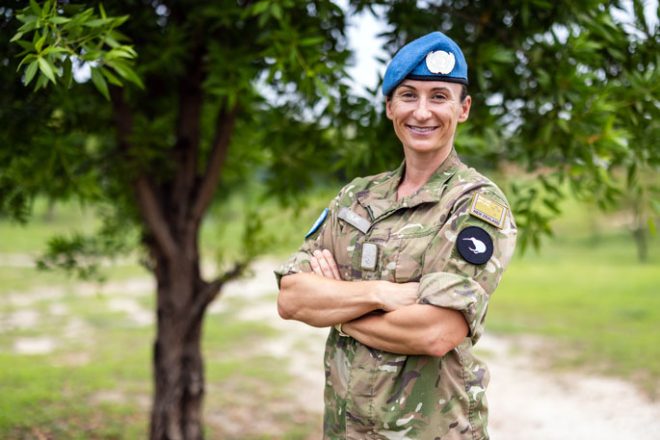Lieutenant Colonel Emily Hume and her team in South Sudan are working hard to prepare for a crucial upcoming election while also trying to prevent a humanitarian crisis in the north of the country. South Sudan, an African nation, is dealing with many issues including political instability, civil war, a humanitarian crisis, ethnic and tribal conflicts, and economic problems.
The United Nations Mission in South Sudan, which is the world’s largest peacekeeping mission, has around 18,000 personnel. Lieutenant Colonel Hume, who is from New Zealand, is the senior national officer on the ground. She is in charge of the welfare of the New Zealand team, which works with military partners from other countries, UN Police, UN civilians, and humanitarian agencies. Their goal is to monitor peace agreements, protect civilians, and help deliver aid.
Lieutenant Colonel Hume has been deployed overseas three times, with previous missions in the Solomon Islands and Lebanon. Now, at 36 years old, she is the deputy chief in charge of long-term planning for 14,000 UN military personnel in South Sudan. She also communicates with teams across South Sudan, the mission headquarters, and UN headquarters in New York.
One of her first tasks in South Sudan was to lead a study to see if the mission had enough military resources to complete its tasks. This experience gave her a deeper understanding of the challenges faced by the teams on the ground, including dealing with increased tensions in a country with limited infrastructure and no early warning systems.
The most challenging part of her deployment has been seeing the poverty and hardship that many South Sudanese people live in. She says that about 8.3 million out of 11 million people in the country rely on humanitarian aid. This situation has worsened since conflict broke out in neighboring Sudan in April.
The UN is working hard to prevent a humanitarian crisis in areas near Sudan, which have seen a surge in people returning to South Sudan, refugees, and internally displaced people fleeing violence. At the same time, they are preparing for the country’s first general election since it gained independence in 2011, which is planned for next year.
Lieutenant Colonel Hume believes it’s important for New Zealand to support South Sudan because life is very difficult for many people there. She says the most rewarding part of her job is seeing the positive impact the UN has had on communities, whether it’s providing clean water, supporting local schools, rebuilding prisons, or holding people accountable for their actions.
New Zealand has been supporting peace efforts in South Sudan through this mission since 2011. Before South Sudan became independent, New Zealand also contributed personnel to the UN Mission in Sudan from 2005 to 2011.





























































